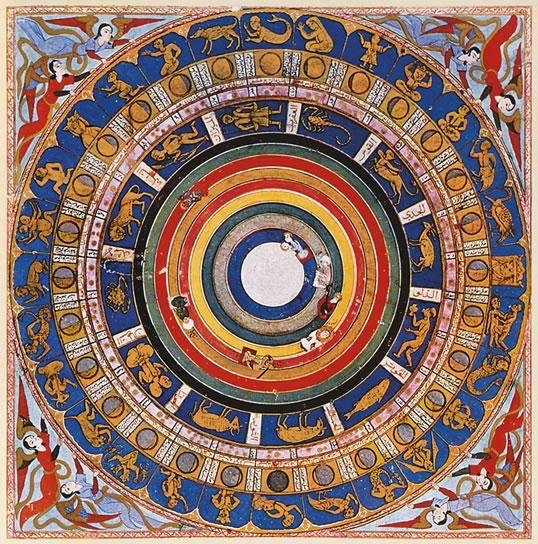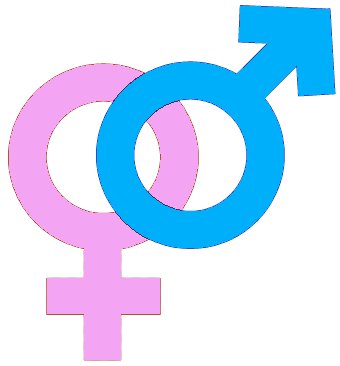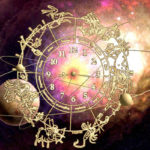There are many ways to study and evaluate the position of a planet in a person’s chart. The Harshabala is the state of happiness of the planet. Harsha means happiness and Bala means strength. This is a factor that is usually studied in Tajika astrology.
Tajika Astrology
Tajika astrology is a unique fusion of the principles of Greek, Persian and Indian astrology methods. It uses principles from all these three schools of astrology. It is based on the work Tajika Neelakanthi by Neelakantha. Tajika is a form of astrology that uses a chart to make annual predictions. This is Varshaphala. Varshaphala literally translates as the fruit of the year.
Tajika astrology uses the concept of the solar return. This is the exact moment that the sun is at the same degree that it was at the time of the person’s birth. This is not always on the exact birthday but will be around that time. The Varshaphala chart is made for the exact moment of solar return and is studied to give indications and predictions for that year. The year is the time between one solar return to the next. While the birth horoscope tells us an overview of the person’s life, the Varshaphala gives us a reading on the influences that a person will be under in the span of that year. The chart for each year of solar return is different and is used as a complementary chart to the birth chart.
Reading A Tajika Varshaphala chart
The Tajika Varshaphala chart is like a Prashna chart for the year. The ways of calculating the chart as well as the sub-charts or Varga charts is the same as done in traditional Jyotish. It has formulae to calculate sensitive points in the chart called Sahams. It differs from classic Jyotish methods in studying yogas, relationships, aspects and the strengths of the planets. But, the roles of the planets, as well as the house significations, are the same as traditional Jyotish. Though the sub-chart calculation is the same the application of the charts is very different in Tajika astrology. This system also uses a factor called the Muntha point that moves through the entire zodiac in 12 years. The house containing the Muntha point indicates the area of focus in that year.

Harsha Bala
One of the ways in which a planet is studied in Tajika astrology is the Harsha Bala of the planet. Astrologers use this factor to study regular charts as well but it more commonly applied to Tajika charts. Harsha Bala literally means the happiness strength or happiness level of the planet. It is a precise quantitative measure calculation based on factors relating to the placement of that planet in the Varshaphala chart. The value of the Harsha Bala of a planet can range from 0 to 20. Rahu and Ketu do not get Harsha Bala scores as they are not considered planets in this system.

When the Harsha Bala of a planet is high it will quite naturally give excellent results by transit as well as during its time periods. A score of 10 or more translates into good results. When the score is low or at worst 0, the planet will give difficulties and things will not go smoothly in the areas it transits as well as in its time periods.
Harsha Bala is one measure of a planets situation in the chart. There are many other factors that one must consider for a complete overall picture of the planet. The Dwadashavargiya Bala or the twelvefold strength factor of a planet is the more complex factor. The Panchavargiya Bala or the five-fold strength is easier and more popular. The Harsha Bala is the easiest one to determine.
Calculation Of Harsha Bala
There are four different factors of a planet’s placement that contribute to the Harsha Bala of a planet. They are the
House position of the planet
- The Mooltrikona, Exaltation or Own sign placement of the planet
- Gender of the house placement (not the Rashi placement gender)
- Whether the solar return time at which the Varshaphala chart is made is in the day or night
These factors each contribute 5 points or Rupas each to the final Harsha Bala score thereby making a total of 20. It is entirely possible for a planet to score a 0 or a full score of 20.
Sthana Bala – Position Of The Planet
The Sthana Bala is the strength or lack of strength the planet gets by virtue of its house placement in the chart. As this is the first or primary strength of the planet it is also the Prathama Bala of the planet. The reasoning of the placement strengths is based on the function of the planet in relation to the significance of the houses.

The highest points of five are given for the following placements:
- Sun placed in the ninth house
- Moon in the third house
- Jupiter in the eleventh house
- Venus in the fifth house
- Saturn in the twelfth house
- Mars in the sixth house
- Mercury in the first house
Uccha-Swakshetri Bala – Own, Exaltation or Moolatrikona
The placement of a planet in its exaltation house, own house or Mooltrikona house is naturally a strong position. This is the Dwitiya Bala or the second strength of the planet. It is quite straightforward as well as easy to calculate. A planet in exaltation, own house or in its Mooltrikona sign gets a full 5 points.
Stri-Purusha Bala – Gender Of The House
The Stri-Purusha Bala is the strength that the planet gets by virtue of its gender and its placement in a house of a similar gender. It is the third strength that a planet can get and therefore called Tritiya Bala. Traditional Jyotish assigns gender to the Rashis as well as the planets. This is a factor used in most traditional readings. However, one must not confuse the traditional practice with the gender that is used in Tajika astrology for calculation of the Harsha Bala. In this system, gender is assigned to the houses.
The houses 1,2,3,7,8,9 are feminine houses. The rest of the houses are masculine houses. The planets Moon, Mercury, Venus and Saturn are feminine as per Tajika astrology. The planets Sun, Jupiter and Mars are masculine. So, when a masculine planet is placed in a masculine house it gets full points. Similarly, a feminine planet in a feminine house gets full points. One must be careful not to confuse the house gender with the Rashi gender.

Stri-purusha Bala Is The Strength That The Planet Gets By Virtue Of Its Gender And Its Placement In A House Of A Similar Gender
Dina- Ratri Bala – Day Or Night Strength
As explained earlier the Varshaphala chart is the moment the Sun transits the exact degree of the time of the birth of a native. Now this point in time could occur either during the day or the night. This factor of day or night gives the fourth strength or Chaturtha Bala to the planet. So, if this solar return is at night the female planets all receive five points each. If the solar return point is during the day, the masculine planets get five points each. This is clearly a concept that is purely applicable to the Tajika solar return chart.

Charting Of The Harsha Bala
The Harsha Bala is in a tabular form. The Harsha Bala table lists the planets and the four different scores given to the planet. The sum of these scores makes the Harsha Bala score of each of the planets. Though it is entirely possible for a planet to receive the full 20 point score this is exceedingly rare. The usual high score is more often 15 and this indicates that the planet is indeed very happy.
Nirbala – Zero Rupas
When a planet gets a score of zero it is most unhappy as well as devoid of strength. This is also Nirbala or without strength.
Alpabali – Five Rupas
A planet that has scored five points is Alpabali or weak.
Madhyabali – Ten Rupas
The middle point or average strength of a planet is ten points. A planet with a ten-point Harsha Bala score is also called Madhyabali or of medium strength.
Poorna Bali – Fifteen Rupas
When a planet scores fifteen Harsha Bala it is a happy planet. This is Poornabali or fully strong. This planet will give good effects by transit and during its time period.
Twenty Rupas
This is a very rare score. It indicates a planet that is extraordinarily strong and also ecstatically happy. This planet will give very strong results.
This Harsha Bala is also used in conjunction with the other planetary strength factors. It is a quick and easy way of understanding how the Varshaphal predictions are made based on the strength of the planet.











